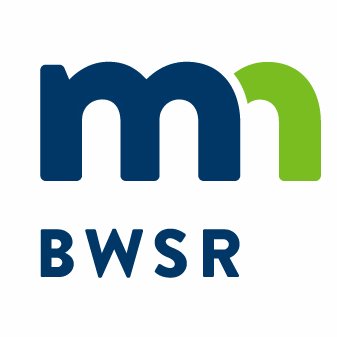Contact: Josh Van Den Berg
651-215-9008
St. Paul, Minn.—At the August 24, 2017 board meeting the Minnesota Board of Water and Soil Resources (BWSR) approved two additional resources for landowners pursuing alternative practices to buffers. Each resource is designed to expand the options for water quality solutions in common situations where practices other than buffers may make sense.
The additional resources for landowners are:
1. A decision support tool, developed by the Minnesota Corn Growers and the University of MN, helps to determine if a combination of upland practices provide comparable benefits to the prescribed buffer.
2. The Ag Buffer Builder, developed by Agren Inc and Land O’Lakes, Inc., provides for the design of a variable width water quality buffer reducing minimum widths by putting more buffer where water leaves the fields.
BWSR Executive Director John Jaschke said, “Minnesota’s buffer law’s flexibility allows additional options for landowners to meet the purpose of the law on landscapes where buffers aren’t the best fit.”
“These additional resources and tools help Minnesota’s corn farmers protect surface waters as intended with the buffer law while limiting the loss of productive land,” Minnesota Corn Growers Association President Harold Wolle said. “We are happy farmers now have additional choices to contribute to our state’s water quality goals.”
The decision support tool is available to landowners at no cost, and will be located on the BWSR website on September 7, 2017. Landowners are encouraged to contact their local SWCD.
“Land O’Lakes SUSTAIN is excited to partner with the state to provide flexibility for farmers, while helping to enhance water quality at the same time,” stated Matt Carstens, executive vice president for Land O’Lakes SUSTAIN. “The Ag Buffer Builder tool helps enable farmers to utilize technology to the advantage of both their business and their local natural resources. By creating variable width buffers through the Buffer Builder tool, a farmer can preserve land in production and focus buffers in the areas that need them most.”
The Ag Buffer Builder will be accessible through the local agricultural cooperative. Inquiries on the Ag Buffer Builder can be directed to Land O’Lakes or one of its partners.
These additional resources are added to the current six alternative practices available for landowners and SWCDs, which include:
1. Minnesota Agricultural Water Quality Certification Program
2. USDA Practice Standard Filter Strip
3. Grassed Waterway on Public Waters
4. Negative Slope on Public Ditches and Glacial Lake Plain Areas Public Ditches
5. Negative Slope on Public Waters
6. Buffer plus Conservation Tillage
Under the law landowners can use alternative practices that provide comparable water quality benefits to buffers. SWCDs have the authority to validate these practices and are working to partner with and support landowners in finding the best solutions for their land. BWSR’s role is to provide program guidance and support and ensure local governments are consistent and working with landowners.
Alternative practices are not limited to options found in the BWSR guidance. Other combinations of practices, based in the Natural Resources Conservation Service Field Office Technical Guide, can be developed in partnership with SWCDs.
Soil and Water Conservation Districts have been hard at work with landowners statewide and progress toward compliance is being made. 64 of Minnesota’s 87 counties are 60 – 100 percent in compliance with the buffer law. Statewide, preliminary compliance with the buffer law is 90%.
For more information
More information on the buffer program, including more detailed information on alternative practices and the variety of technical and financial assistance available to help landowners with implementation, can be found at mn.gov/buffer-law.

